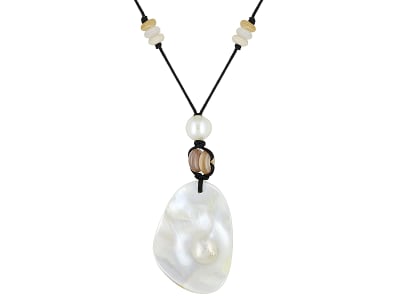Blister pearls are large pearls that have intergrown with mollusks or freshwater mussels and are integrated with the shell. Solid “blister” pearls are akin to mabé pearls, but they are natural and not assembled. They are known to have a high luster and are more durable than mabé pearls. They are typically rounded or irregular in shape and have been known reach 2 cm in size. They are more often found in in larger Pinctadas molluscs. They are called “puku” in the Cook Islands. They are also found in freshwater river mussels in North America. The freshwater blisters pearls are often found in mussels with distorted shells and are come in irregular, round or button shapes. Snail blisters are created when small snails or mollusks invade the mussel shell. Blisters pearls have also been found in “Lion’s Paw Pearls” in Laguna Ojo de Liebre in Baja California, Mexico, and Conch pearls in the Caribbean.
General Information
LWUV: Variable
Blister Pearl Colors
-
 Black
Black -
 Blue
Blue -
 Pink
Pink -
 White
White -
 Yellow
Yellow
Countries of Origin
Puerto Rico; Cook Islands; Japan; Philippines; United States of America; Thailand; Bahamas; French Polynesia; Cuba; Unknown; China; Dominican Republic; Mexico; Australia; Jamaica; Indonesia
History
The most famous blister pearl is the “Hope Pearl” once owned by the banker Henry Philip Hope. Hope is best known as the former owner of the “Hope Diamond”. It is believed that Jean-Baptiste Tavernier, a 17th-century French gem merchant, purchased the pearl in India in 1650. Tavernier then sold the pearl in 1669 to the French King Louis XIV. The pearl is reported to measure 150x83x50 mm and weighs 1816 grains or 454 carats. The “Hope Pearl” was sold to H.E. Mohammed Mahdi Al-Tajirin in 1974 for $200,000. It is now held in private ownership by an anonymous pearl collector in Britain.
Care
Avoid cosmetics, perfumes, hairsprays, heat and household chemicals. “Mabé Pearls" are softer than true cultured pearls and care has to be taken not to damage them.

